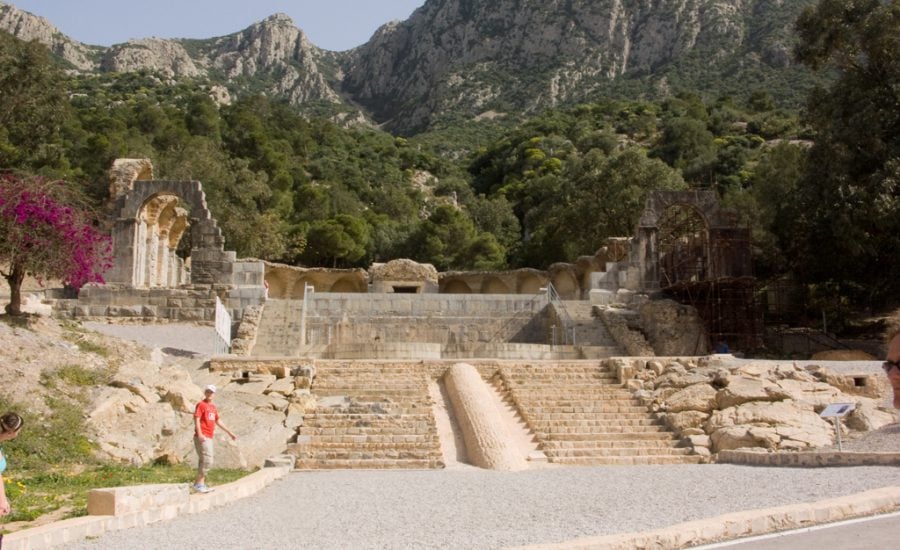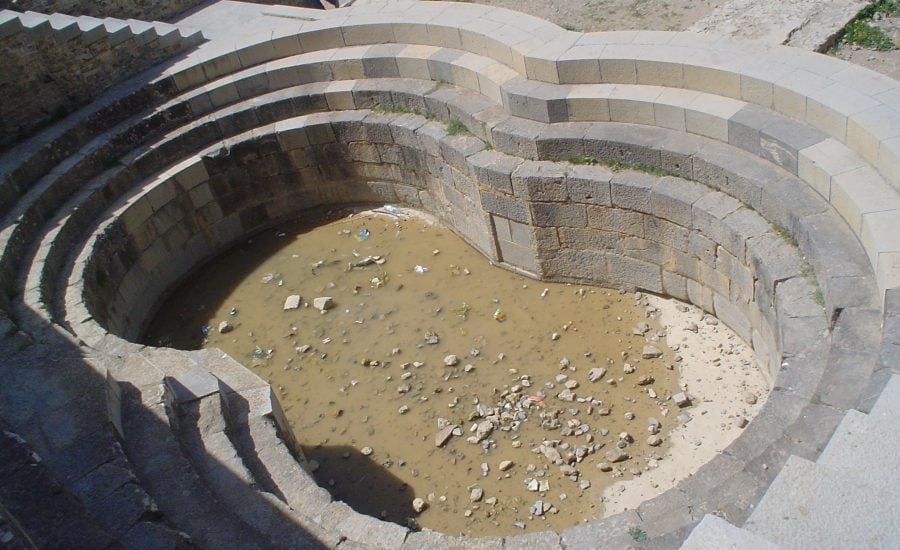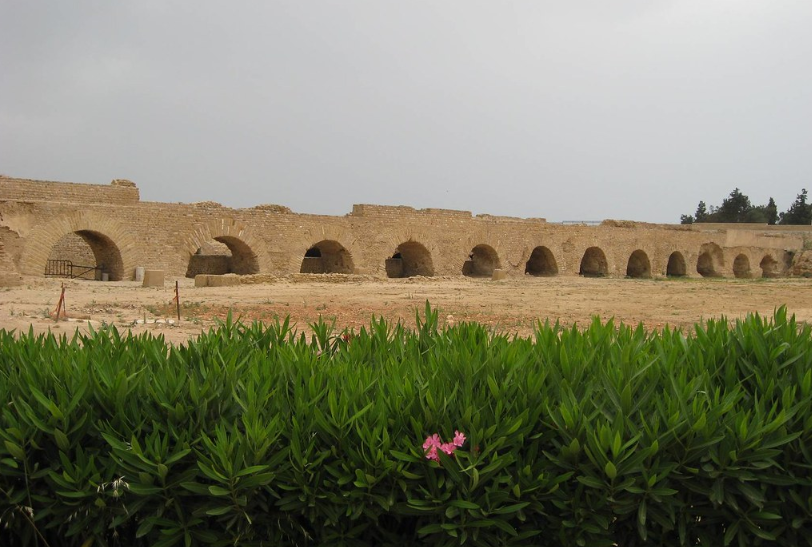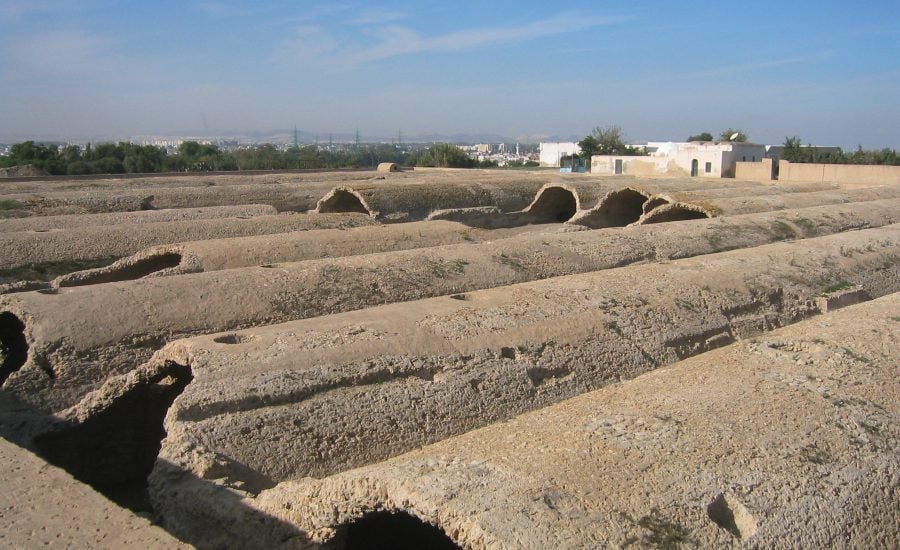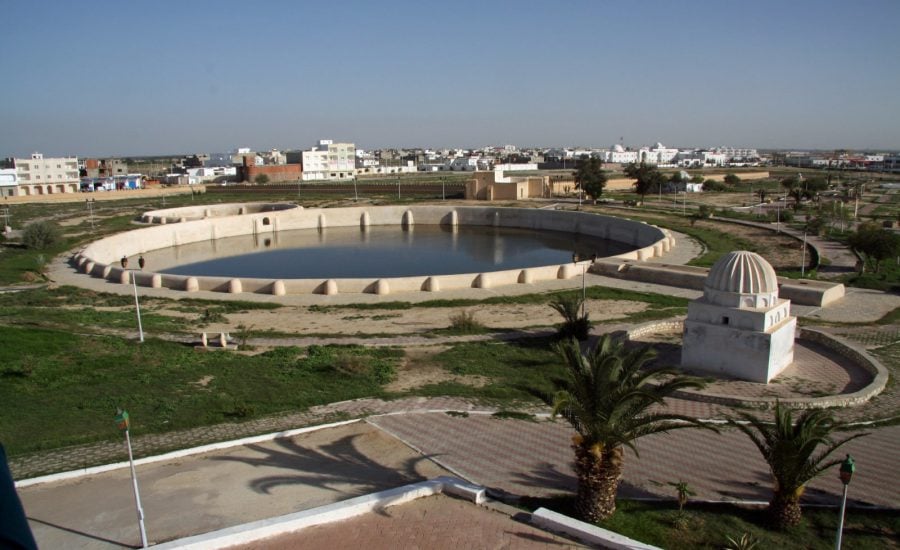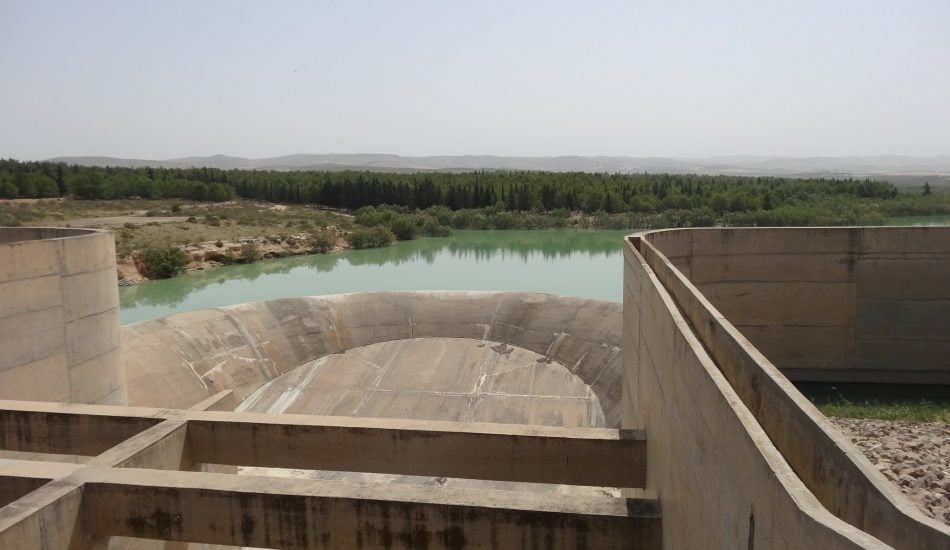
Dams, irrigation systems, wastewater treatment plants, large well fields
The Tunisian government (Ministry of Agriculture, Water Resources and Fisheries) has made significant efforts since its independence in 1956 to mobilize water resources by building large and small dams, reservoirs, transfer pipelines, river defence works, drinking water treatment stations, wastewater treatment stations and water desalination stations, agricultural drainage systems and so on, to the extent that water infrastructure covers almost the whole country.
In 2017, there were 37 dams (total capacity 2.5 km3), 230 hill dams and 950 hill lakes, and 138,000 water wells in operation.[1] Most dams are constructed in the northern basin. In 2015, the mobilized water amounted to 4.4 km3 or 92% of the potential resources, made up of 81% of surface water resources and 93% of groundwater resources.
Modern irrigation was introduced after 1958 with the creation of water storage infrastructure and a canalisation network for the irrigated perimeter of the Lower Medjerda valley (30,000 ha). Before the 1960s, the irrigated area amounted to 60,000 ha. By 2012, this had increased to 420,000 ha, representing 8% of the total cultivated area. This expansion was due to technological progress in pumping equipment, distribution pipelines and more economical irrigation techniques.[2]
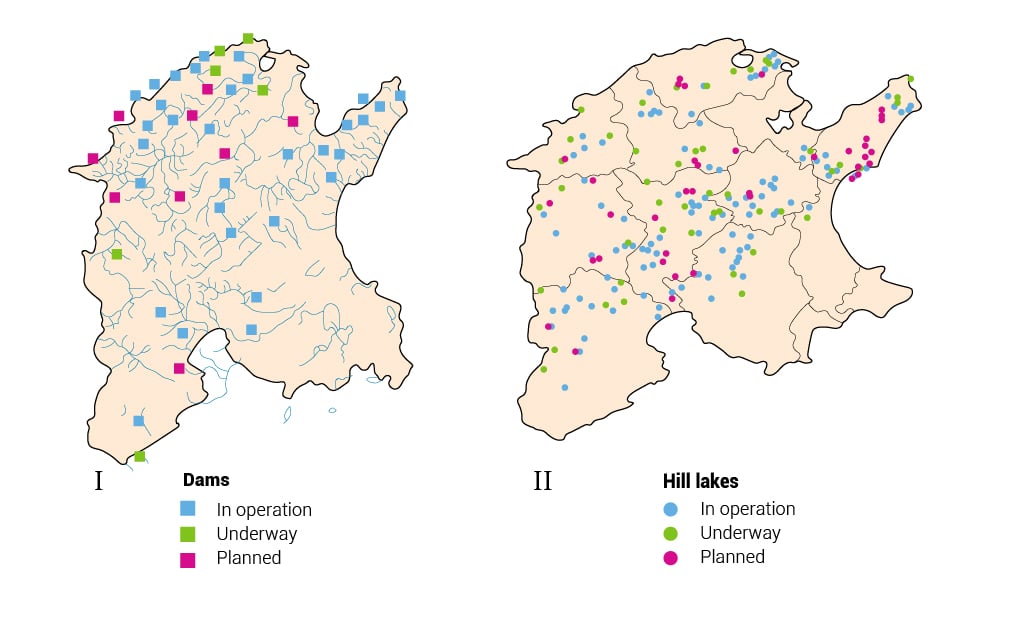
Traditional water collection and distribution systems
Traditional water collection has been practised across the country from the Berbers, Carthaginians and Romans (Zaghouan aqueduct, water temple) through the Islamic period (Aghlabit cisterns) to contemporary water-harvesting and storage structures (meskat, jessour, hillside and large dams, water and soil conservation etc.).[3] Traditional rainwater harvesting structures are classified into three major groups: (1) the meskat system, used for runoff water harvesting in the central (Sahel) region,[4] [5] and the jessour system, used mainly in wadis of the south for water harvesting by blocking the flow using stones; (2) Mgoud consisting of a hill slope catchment system for floodwater harvesting and distribution or spate irrigation using diversion. The long slope water harvesting system is called tabia, whereas harvesting from an external macro-catchment is called mgoud; and (3) a cistern called a fesquia or majel, used across Tunisia to provide drinking water for people and animals as well as water for small irrigation purposes by collecting and storing runoff water in reservoirs of varying capacities.
Planned projects
The major planned projects are intended to address the current and expected future water management needs in Tunisia. Ongoing and planned projects include:
– Construction of new dams: In 2017, two dams were constructed in the el-Kef and Gafsa regions with a capacity of 21 MCM and 25 MCM respectively. Three more dams are under construction in el-Kef, Bizerte and Kalaat Kebira.
– Interconnection of dams and water-transfer projects about to be completed: Water transfer works from four dams (Melah, Tine, Gamgoum and el-Harka) to the transfer systems of Sidi Barrak, Sedjnane, Joumine and Medjerda. Two more projects are in the process of being started to connect the Houareb and Sidi Saad dams. Others are at the feasibility study phase for the transfer of surplus water from the north to the central region.
– Protection of cities from flooding and other types of inundation: 24 projects, launched between 2014 and 2017, are in progress and 13 are under study. The full list of these projects can be found in [6].
– Water and soil conservation projects: 34 hill lakes are planned, including seven that are underway and 16 that are in the study phase.
– Rehabilitation and modernization of irrigated perimeters: Two major projects were selected in 2017 to ensure better management of water resources and improve the efficiency of the pipeline networks. These are the Irrigation Intensification Project in the north-west governorates and the Valorisation of Public Irrigated Perimeters in the central region.
– Securing drinking water during the summer months, including a water treatment plant at Lebna Dam (in progress), improving water resources in the south of Kairouan and further work and studies for five seawater desalination plants in Djerba, Sousse, Zarat, Sfax and Kerkennah. Several programmes are planned to improve drinking water supply in rural areas.
– Implementing energy control measures for the period 2021-2025: Construction of a photovoltaic project with a capacity of 10 megawatts and an additional 3 megawatts at the desalination plants in Sfax and Tozeur.
[1] Ministry of Agriculture, Water Resources and Fisheries, 2017. Rapport National du Secteur de l’Eau
[2] ITES, 2014. Etude Stratégique: Système Hydraulique de la Tunisie à l’Horizon 2030.
[3] Oweis T et al., 2004. Indigenous Water Harvesting in West Asia and North Africa.
ICARDA, Aleppo, Syria.
[4] Nasri S et al., 2004. Hydrological processes in macrocatchment water harvesting in the arid region of Tunisia: the traditional system of tabias. Hydrological Sciences Journal 49(2).
[5] Ministry of Agriculture, Water Resources and Fisheries, 2017. Rapport National du Secteur de l’Eau.

